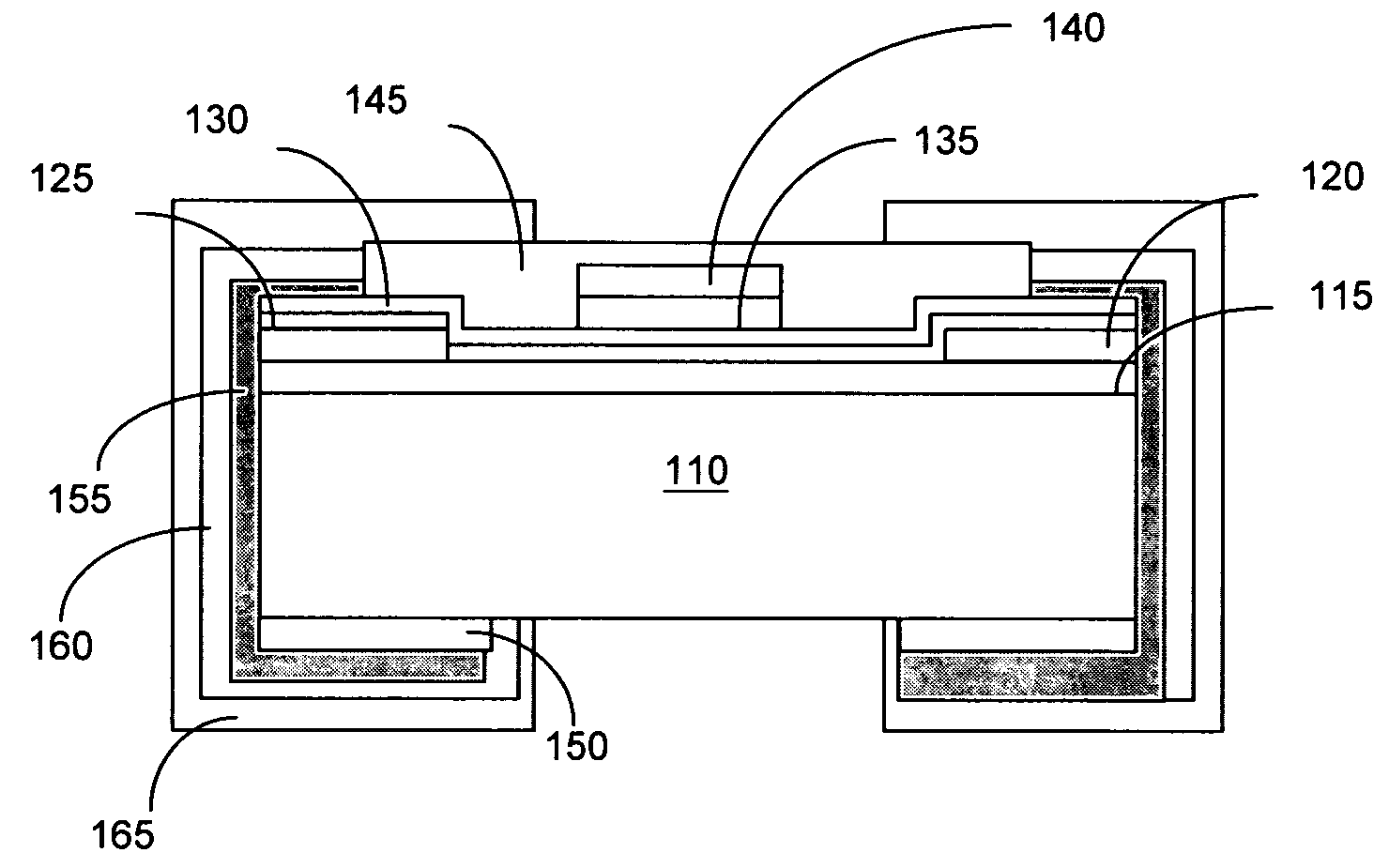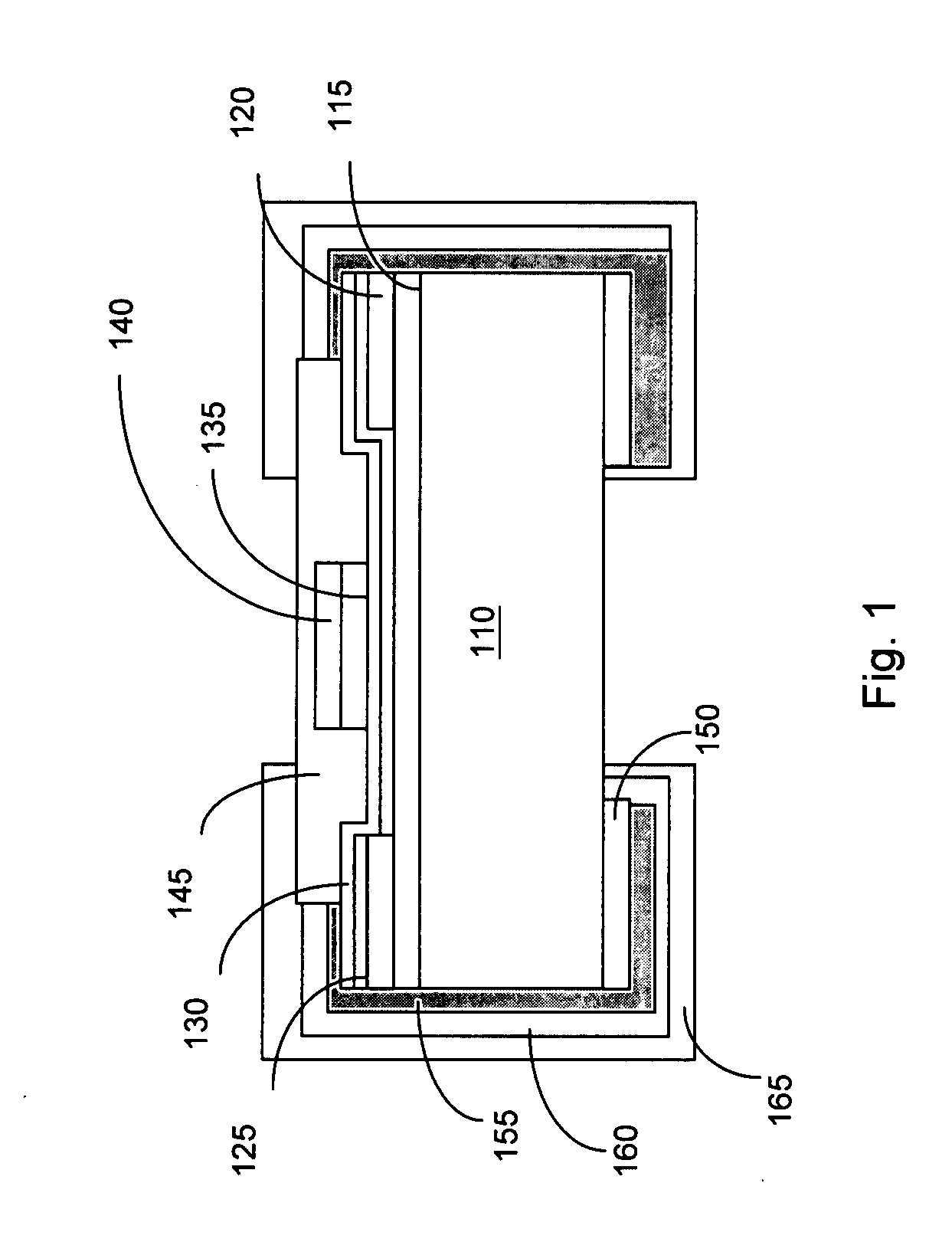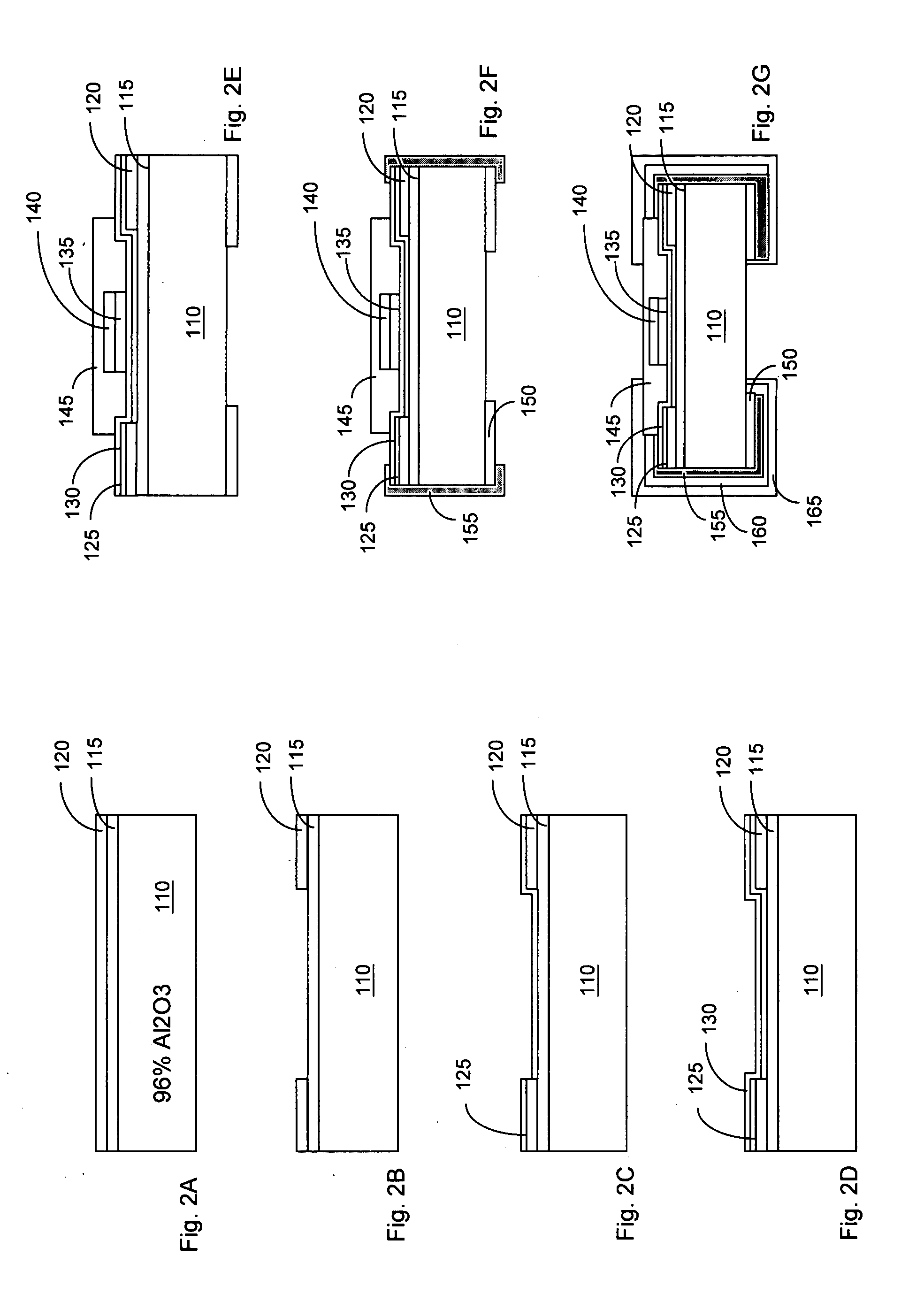Fuse element and manufacturing method thereof
a manufacturing method and fuse element technology, applied in the manufacture of emergency protective devices, electrical devices, protective switch operating/release mechanisms, etc., can solve the problems of longer time required to activate the breaking action of the fuse element, shorten the time required for the fuse element to reach the fuse, and the fuse element supported on the ceramic substrate often requires longer time to reach the fuse. , to achieve the effect of high current and high temperature operation
- Summary
- Abstract
- Description
- Claims
- Application Information
AI Technical Summary
Benefits of technology
Problems solved by technology
Method used
Image
Examples
Embodiment Construction
[0019]Referring to FIG. 1, a fuse element 100 according to the present invention comprises a substrate 110, a heat insulation layer 115, a pair of copper terminal 120, a first seed layer 125, a fuse layer 130, a buffer layer 135, an accelerated layer 140, a protective layer 145, a bottom terminal layer 150, a second seed layer 155, and side terminal layers 160 and 165. The protective layer 145 is disposed above the heat insulation layer 115. The fuse layer 130 is disposed between the heat insulation layer 115 and the protective layer 145. The fuse element is manufactured with a thin film technology.
[0020]The fuse element 100 begins with the substrate 110 for supporting the other elements of the fuse element 100. In the embodiment, the material of the substrate 110 is an aluminum oxide (Al2O3). Other material for the substrate 110 includes, but not limited to, glass. The substrate 110 includes a top surface 1101, a bottom surface 1102 opposite to the top surface 1101, and side surfac...
PUM
 Login to View More
Login to View More Abstract
Description
Claims
Application Information
 Login to View More
Login to View More - R&D
- Intellectual Property
- Life Sciences
- Materials
- Tech Scout
- Unparalleled Data Quality
- Higher Quality Content
- 60% Fewer Hallucinations
Browse by: Latest US Patents, China's latest patents, Technical Efficacy Thesaurus, Application Domain, Technology Topic, Popular Technical Reports.
© 2025 PatSnap. All rights reserved.Legal|Privacy policy|Modern Slavery Act Transparency Statement|Sitemap|About US| Contact US: help@patsnap.com



